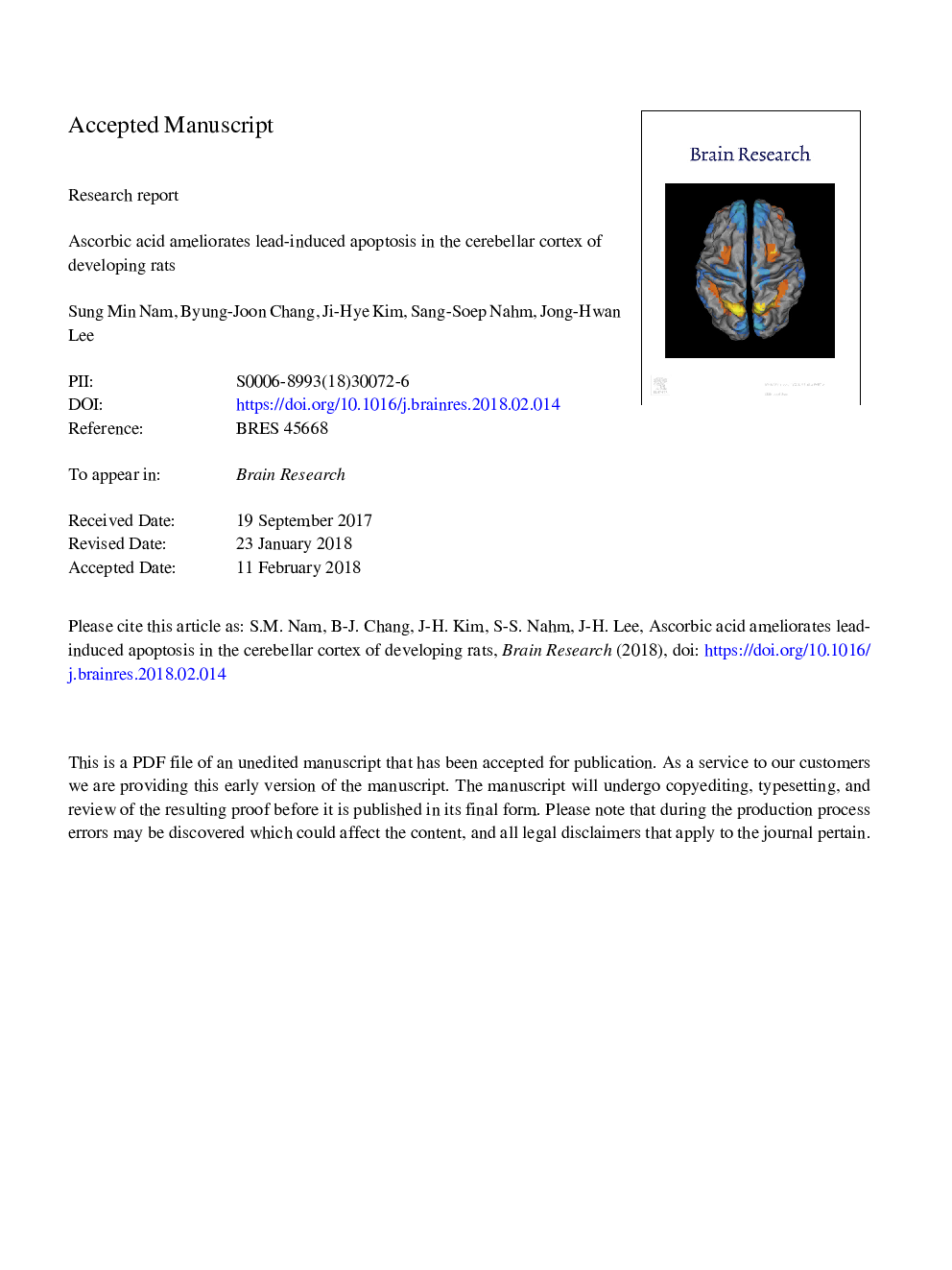| Article ID | Journal | Published Year | Pages | File Type |
|---|---|---|---|---|
| 8839844 | Brain Research | 2018 | 33 Pages |
Abstract
We investigated the effects of the gestational administration of lead (Pb) and ascorbic acid on cerebellar development. Pregnant female rats were randomly assigned to the control, Pb, or Pb plus ascorbic acid (PA) groups; six offspring per cage were randomly selected for analysis. Compared to the control group, fewer Purkinje cells were observed in the Pb-exposed pups at postnatal day 21. However, co-administrating Pb and ascorbic acid inhibited the Pb-induced reduction in Purkinje cells. Terminal deoxynucleotidyl transferase-mediated dUTP nick end-labeling (TUNEL) staining, which detected DNA fragmentation in the dying cells, showed more TUNEL-positive cells in the Pb group, while co-treatment with Pb and ascorbic acid mitigated the Pb-induced cellular degeneration. Using immunohistochemistry and immunoblotting, we additionally found that Pb exposure induced a rise in the apoptotic factor Bax in the cerebellum, while Pb plus ascorbic acid treatment ameliorated this Bax induction. Since, Pb competes with the iron in the cell and the accumulation of free iron triggers oxidative stress, we performed iron staining, which revealed that ascorbic acid prevented the Pb-induced rises in iron-reactive cells and iron-reactivity. The anti-oxidant enzyme manganese-dependent superoxide dismutase showed change patterns that were similar to those of iron in the cerebellum. Finally, the pups' blood Pb levels were highest in the Pb group but were reduced in the PA group. Our findings suggest that ascorbic acid effectively ameliorates Pb-induced apoptosis and oxidative stress in the cerebellum. The present results imply that ascorbic acid treatment during pregnancy may protect against Pb-mediated developmental impairments in the cerebellum.
Related Topics
Life Sciences
Neuroscience
Neuroscience (General)
Authors
Sung Min Nam, Byung-Joon Chang, Ji-Hye Kim, Sang-Soep Nahm, Jong-Hwan Lee,
